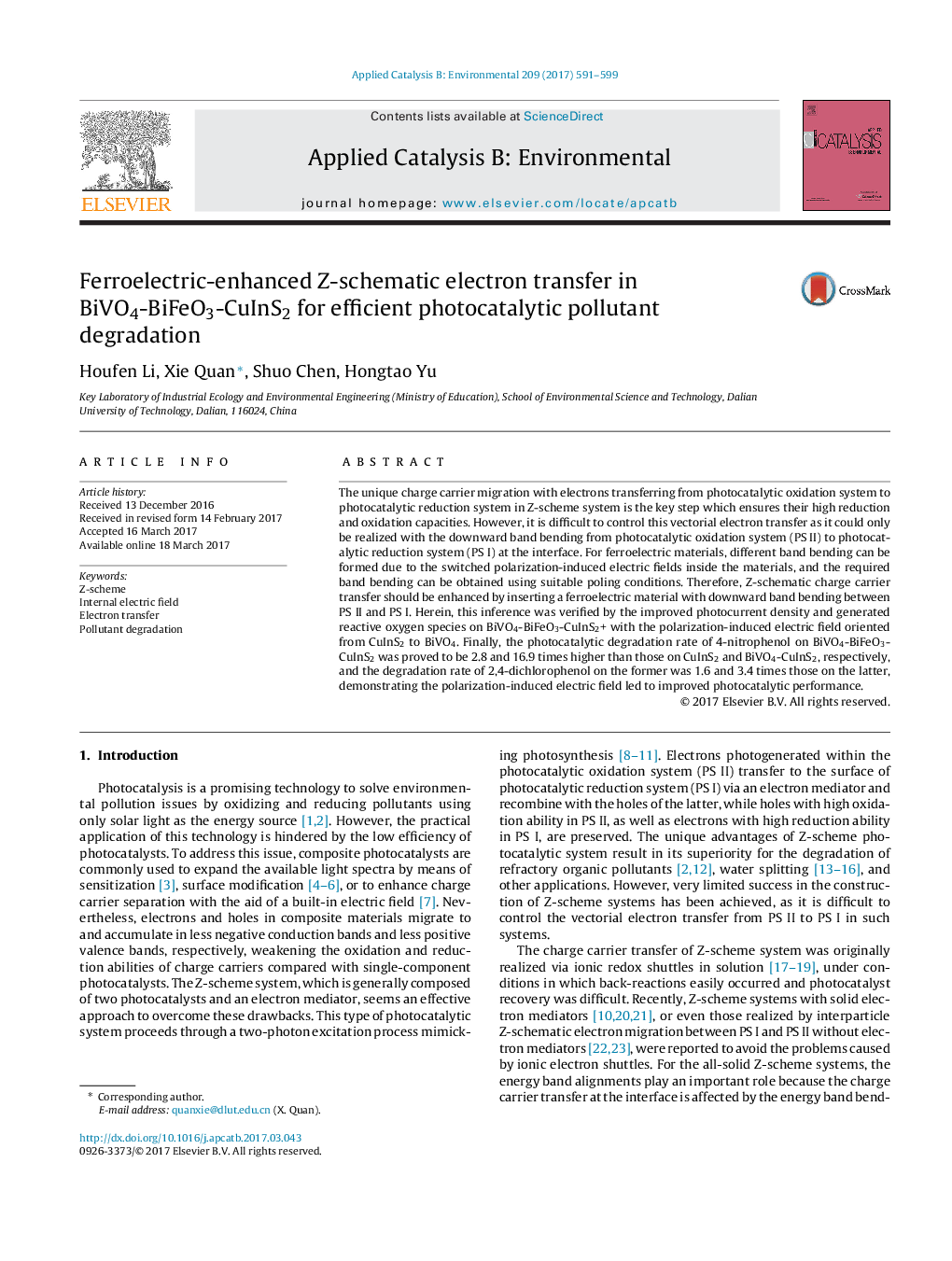| Article ID | Journal | Published Year | Pages | File Type |
|---|---|---|---|---|
| 6454237 | Applied Catalysis B: Environmental | 2017 | 9 Pages |
â¢BiVO4-BiFeO3-CuInS2 Z-scheme system was first prepared.â¢Internal electric field was first reported as driving force for Z-scheme system.â¢Reactive oxide species generated in the presence of BiVO4-BiFeO3-CuInS2.â¢Photocatalytic degradation of 4-nitrophenol and 2,4-dichlorophenol were enhanced.
The unique charge carrier migration with electrons transferring from photocatalytic oxidation system to photocatalytic reduction system in Z-scheme system is the key step which ensures their high reduction and oxidation capacities. However, it is difficult to control this vectorial electron transfer as it could only be realized with the downward band bending from photocatalytic oxidation system (PS II) to photocatalytic reduction system (PS I) at the interface. For ferroelectric materials, different band bending can be formed due to the switched polarization-induced electric fields inside the materials, and the required band bending can be obtained using suitable poling conditions. Therefore, Z-schematic charge carrier transfer should be enhanced by inserting a ferroelectric material with downward band bending between PS II and PS I. Herein, this inference was verified by the improved photocurrent density and generated reactive oxygen species on BiVO4-BiFeO3-CuInS2+ with the polarization-induced electric field oriented from CuInS2 to BiVO4. Finally, the photocatalytic degradation rate of 4-nitrophenol on BiVO4-BiFeO3-CuInS2 was proved to be 2.8 and 16.9 times higher than those on CuInS2 and BiVO4-CuInS2, respectively, and the degradation rate of 2,4-dichlorophenol on the former was 1.6 and 3.4 times those on the latter, demonstrating the polarization-induced electric field led to improved photocatalytic performance.
Graphical abstractDownload high-res image (129KB)Download full-size image
